Rescue Bag Basics
The Rescue/Throw Bag is a vital piece of safety equipment used to rescue a swimmer and, in some cases, to help unpin a boat. There should be a minimum of one per boat on any trip. Bags come in various shapes and sizes, but fall into two main categories—bags worn on the boater’s waist and bulkier ones carried in the boat.
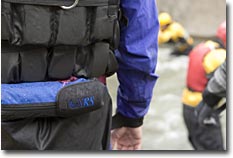 The bags are made of nylon or other synthetic material and contain some closed-cell foam to keep the empty bag afloat. Open the bag just enough to pull some rope out. Hold the free end securely, and toss the bag to the swimmer. Rope used in the bags is at least partially made of polypropylene, because it floats. The bright color of bags and rope make them easily visible to both the swimmer and the rescuer. Throwing the bag to a swimmer can be done from shore or on the water from a stable platform like a raft or drift boat. An underhand throw, “softball pitch” style, is a natural, instinctive motion. You may get more distance with an overhand, “baseball pitch” toss. A sidearm throw may be necessary, depending on your position, obstructions, etc, but accuracy may suffer. Practice tossing your rescue bag ahead of time; don’t let an emergency catch you unprepared.
The bags are made of nylon or other synthetic material and contain some closed-cell foam to keep the empty bag afloat. Open the bag just enough to pull some rope out. Hold the free end securely, and toss the bag to the swimmer. Rope used in the bags is at least partially made of polypropylene, because it floats. The bright color of bags and rope make them easily visible to both the swimmer and the rescuer. Throwing the bag to a swimmer can be done from shore or on the water from a stable platform like a raft or drift boat. An underhand throw, “softball pitch” style, is a natural, instinctive motion. You may get more distance with an overhand, “baseball pitch” toss. A sidearm throw may be necessary, depending on your position, obstructions, etc, but accuracy may suffer. Practice tossing your rescue bag ahead of time; don’t let an emergency catch you unprepared.
When using a throw bag to rescue a swimmer, do your best to make sure you’re not making the situation worse by your efforts. NEVER tie your end of the rope to yourself or any object; always be prepared to release the rope if need be. When setting up a rescue position on shore, plan for where you can bring the swimmer to shore, ideally into an eddy or slower water; not into rocks, holes or other obstacles. For your protection, always wear your PFD when assisting in a rescue, should you get pulled into the water.
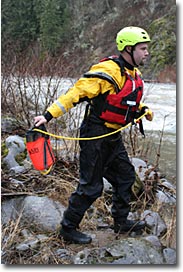 Try to get the swimmer’s attention, with whistle blasts or shouts, before throwing the rescue bag. Ideally, toss it so that the bag sails past the swimmer and line falls across their chest. If you have their attention before you throw, they can move to the rope if you miss. The swimmer should grab the line, not the bag, hold the line across the chest and turn on their back so you can pendulum them into shore or pull them to the boat. Discuss proper rescue techniques before starting a trip, like in the Rafting Put-in Safety Talk.
Try to get the swimmer’s attention, with whistle blasts or shouts, before throwing the rescue bag. Ideally, toss it so that the bag sails past the swimmer and line falls across their chest. If you have their attention before you throw, they can move to the rope if you miss. The swimmer should grab the line, not the bag, hold the line across the chest and turn on their back so you can pendulum them into shore or pull them to the boat. Discuss proper rescue techniques before starting a trip, like in the Rafting Put-in Safety Talk.
If you miss with the first throw, pull the bag in, coiling the rope at your feet or in your hand. The bag should be full of water, giving it enough weight to toss again. You can also throw the coil of rope, although you won’t be able to get the same distance. Be careful not to get tangled in the loose rope. And speaking of getting tangled, along with having a rescue bag, it is essential that you also have a sharp knife—in case it’s necessary to cut the rope to protect yourself or the swimmer.
Swift-moving water puts amazing pressure on a swimmer. When the rope becomes taut, the shock on you and the swimmer can pull the rope from your hands. Try to minimize that shock by slowing the swimmer’s progress more gradually by moving along the bank or letting out some line.
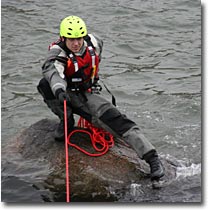 For a stronger grip than just holding the rope in your hands, borrow a climber’s technique, the “belay.” Pass the rope across your back, down low on the hips or higher across the shoulder. You can sit and brace your feet against rocks or the boat. Another rescuer can assist by grabbing your PFD and helping with the brace. You can also apply friction to the rope by wrapping or bending it around a tree, rock, etc. Again, do not tie the rope to yourself or an object.
For a stronger grip than just holding the rope in your hands, borrow a climber’s technique, the “belay.” Pass the rope across your back, down low on the hips or higher across the shoulder. You can sit and brace your feet against rocks or the boat. Another rescuer can assist by grabbing your PFD and helping with the brace. You can also apply friction to the rope by wrapping or bending it around a tree, rock, etc. Again, do not tie the rope to yourself or an object.
Prolong the life of your rope by rinsing and drying it after each outing. When restuffing the bag, coil the rope directly into the bag. Coiling it first and then putting it into the bag can cause a tangle that prevents the rope from smoothly flowing out of the bag when tossed.
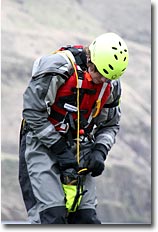 For those of us who often drive along fast-moving rivers, also having a rescue bag in your vehicle can be a lifesaver. People have been saved by a quick-thinking motorist who was able to toss them a line.
For those of us who often drive along fast-moving rivers, also having a rescue bag in your vehicle can be a lifesaver. People have been saved by a quick-thinking motorist who was able to toss them a line.
The bottom line is—always have a rescue bag handy, and practice using it. And make sure your boating buddies have them too. The life that gets saved could be yours.
You can find more excellent information on rescue bag usage and other swiftwater rescue techniques in the River Rescue 4th Edition, and Swiftwater Rescue, by Slim Ray.
For on-the-water safety, nothing beats taking a swiftwater rescue class, where you get instruction and practice in rescue techniques. A number of organizations and companies provide training.
Boat Safe!
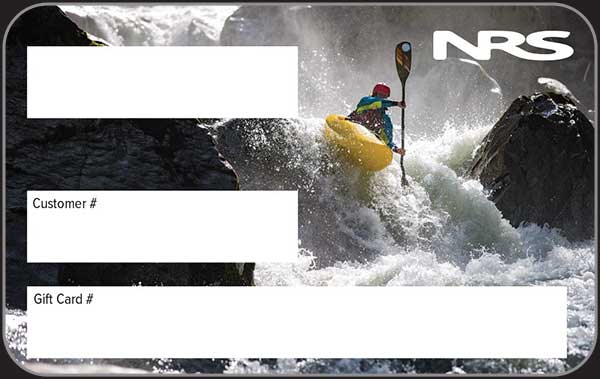 NRS Gift Card: Always Fits, Always Wanted
NRS Gift Card: Always Fits, Always Wanted




